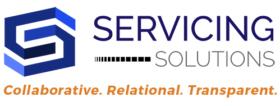The Growing Importance of Loss Mitigation in Consumer and Auto Lending
In today’s dynamic economic landscape, loss mitigation has become a critical component of managing consumer unsecured and auto loan portfolios. As financial institutions face increasing challenges, implementing effective strategies to minimize losses while supporting borrowers has never been more crucial.
Understanding Loss Mitigation in Consumer and Auto Portfolios
Loss mitigation refers to the strategies and actions taken by lenders to reduce potential losses on loans at risk of default. In the context of consumer unsecured and auto lending, these efforts are particularly important due to the personal nature of these loans and their impact on borrowers’ daily lives.
Strategic Loss Mitigation Approaches for Distressed Portfolios
Comprehensive Portfolio Analysis
To effectively mitigate losses, lenders must first gain a deep understanding of their portfolio’s health. This involves:
- Financial assessment of borrowers: Analyze credit scores, income stability, and debt-to-income ratios. Understanding the changes that have taken place from the time of funding to now is crucial.
- Risk segmentation of accounts: Categorize loans into high, medium, and low-risk segments based on payment history and current financial indicators. This allows for a more focused treatment.
Implement a monthly portfolio scoring and or review process, using data analytics to identify trends and potential risk factors. I would be happy to provide you with a refer to a fintech company that can build out a model based on propensity to pay.
Proactive Borrower Engagement
Early intervention is key to successful loss mitigation. Lenders should:
- Implement early warning systems to identify at-risk borrowers: Set up automated alerts for missed payments, on loans with a low propensity to pay based on your KpI’s or model.
- Develop customized communication strategies: Tailor outreach methods (e.g., email, phone, text) based on borrower preferences and risk levels.
Actionable suggestion: Proactively you can create a “Financial Wellness” program, offering free financial education resources to borrowers, which can help prevent future defaults.
Loss Mitigation Techniques for Consumer Unsecured Debt
For unsecured consumer debt, lenders can consider:
- Repayment plans and restructuring: Offer extended terms or reduced interest rates for a set period.
- Debt consolidation options: Partner with reputable debt consolidation services to provide borrowers with alternatives.
- Settlement negotiations: For severely distressed accounts, consider accepting a lump sum payment for less than the full balance, or a shorty term set of payments to settle an account
Actionable suggestion: Develop a tiered approach to debt restructuring, with clear guidelines for when to offer each option based on the borrower’s financial situation and payment history.
Specialized Loss Mitigation Strategies for Auto Loans
Auto loans require unique strategies due to the presence of collateral. Effective approaches include:
- Loan modifications and term extensions: Offer to extend the loan term to reduce monthly payments.
- Temporary payment reductions: Implement a 3-6 month reduced payment plan for borrowers facing temporary financial hardship.
- Voluntary surrender programs: Develop a program that allows borrowers to voluntarily surrender their vehicle without severely impacting their credit score.
Actionable suggestion: Create a “Second Chance” program for borrowers who have missed payments but want to keep their vehicle, offering a one-time opportunity to catch up on missed payments without penalties.
Leveraging Technology in Loss Mitigation
Technology plays a crucial role in modern loss mitigation efforts:
- Data analytics for risk prediction: Use machine learning algorithms to predict which borrowers are likely to default in the next 30-90 days.
- Automated decision-making tools: Implement software that can quickly assess borrower situations and suggest appropriate loss mitigation strategies.
- Digital platforms for borrower self-service: Develop a user-friendly portal where borrowers can explore loss mitigation options and submit requests online.
Actionable suggestion: Implement a chatbot on your website that can guide borrowers through initial loss mitigation options and collect preliminary information before connecting them with a human representative.
Measuring Success in Loss Mitigation
To ensure the effectiveness of loss mitigation strategies, lenders should track key performance indicators (KPIs) and conduct regular ROI analyses of their mitigation efforts.
Specific KPIs to monitor include:
- Cure rate: The percentage of delinquent loans that return to current status after mitigation efforts.
- Re-default rate: The percentage of loans that default again after a loss mitigation plan is implemented.
- Average loss severity: The average amount of loss per defaulted loan after mitigation efforts.
- Time to resolution: The average time it takes to implement a loss mitigation solution from the point of initial contact.
- Customer satisfaction scores: Measure borrower satisfaction with the loss mitigation process and outcomes.
Actionable suggestion: Create a monthly dashboard that tracks these KPIs, setting specific targets for improvement and regularly reviewing performance with your team.
Balancing Borrower Assistance and Portfolio Performance
Effective loss mitigation in consumer and auto portfolios requires a delicate balance between supporting borrowers and protecting the lender’s interests. By implementing proactive strategies, leveraging technology, and maintaining open communication with borrowers, financial institutions can navigate challenging economic conditions while minimizing losses and maintaining strong customer relationships.
Remember, the key to successful loss mitigation lies in early intervention, personalized solutions, and continuous monitoring and adjustment of strategies based on performance data.


